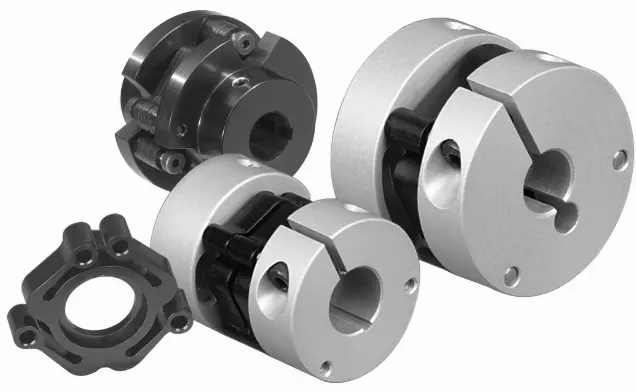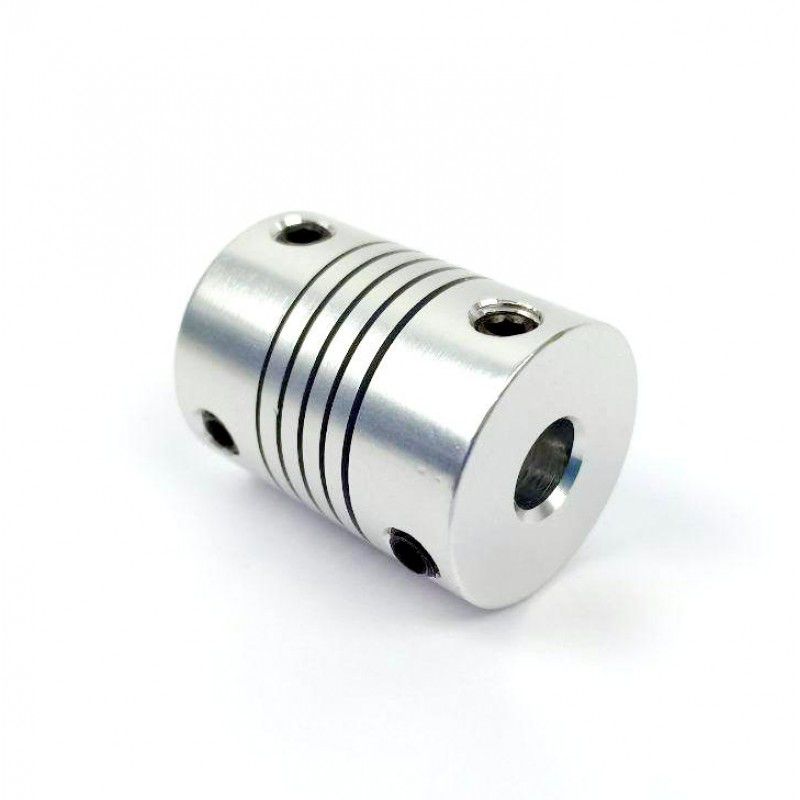Product Description
Product Description
Gearbox Motor Rubber Coupling for workshop elevators Spare Parts
|
Model |
Rated Torque Tn |
Allowable Rotation Speed |
Bore Diameter d1 , d2 , dz |
Bore Length L, L1 |
Weight |
| N.m | r/min | mm | mm | kg | |
|
CLSJ50 |
28 |
15000 |
10-24 |
22-38 |
1.00 |
|
CLSJ70 |
112 |
11000 |
12-38 |
27-60 |
2.50 |
|
CLSJ85 |
160 |
9000 |
16-38 |
30-60 |
3.42 |
|
CLSJ105 |
355 |
7250 |
18-42 |
30-84 |
5.15 |
|
CLSJ125 |
450 |
6000 |
20-55 |
38-84 |
10.1 |
|
CLSJ145 |
710 |
5250 |
25-65 |
44-107 |
13.1 |
|
CLSJ170 |
1250 |
4500 |
30-85 |
60-132 |
21.2 |
|
CLSJ200 |
2000 |
3750 |
35-95 |
60-142 |
33.0 |
|
CLSJ230 |
3150 |
3250 |
40-95 |
84-142 |
45.5 |
|
CLSJ260 |
5000 |
3000 |
45-125 |
84-172 |
75.2 |
|
CLSJ300 |
7100 |
2500 |
60-140 |
108-172 |
99.2 |
|
CLSJ360 |
12500 |
2150 |
60-150 |
107-212 |
148.1 |
|
CLSJ400 |
14000 |
1900 |
80-160 |
132-242 |
197.5 |
why choose our product
Cheaper price than CHINAMFG brands, good quality.
FAQ
1. What are your main products?
We produce Construction Hoist (also called construction elevator, construction lift) and spare parts of it.
2. Are all Construction Hoist the same from all Vendors & Manufacturers?
Our High rise building construction hoist with VFD for lifting materials and passengers have exported to Europe, Middle and southern America, most of Asia, and some countries from Africa, about 50 countries. We can well match European standards, Russia standards and America standards. We have technology for develope new design ability and we support many customer with good solutions to solve their construction site special vertical access problems.
3. Do your products have some certificates?
Yes. Our Construction Hoist have passed CE ,ISO Certificates.
4. What are the payment terms and the delivery time?
Payment terms are T/T and LC. We will ship the cargo within 7-21 days after receiving the 30% deposit.
5. Are you manufacturer or the trader?
We are manufacturer with 17 years maker experiences, have advanced production line and inspection device. Our Research and development team have got many praise from customers.
6. Will you develop distributor and sole agent?
Yes, should you have any interest to be our distributor and agent, please let us know in any ways. Sole agent is available depend on the sales turnover.
7. Where do you ship to and what countries have you done business in?
We provide quick and efficient shipping to countries all over the world from HangZhou port or other China port.
We have done business with customers in many countries, such as Mexico, Brazil, Korea, Malaysia, Thailand, India, Vietnam, Indonesia, UAE, Qatar, Kuwait,Saudi Arabia etc.
/* January 22, 2571 19:08:37 */!function(){function s(e,r){var a,o={};try{e&&e.split(“,”).forEach(function(e,t){e&&(a=e.match(/(.*?):(.*)$/))&&1

Understanding the Torque and Misalignment Capabilities of Motor Couplings
Motor couplings play a crucial role in transmitting torque from the motor to the driven equipment while accommodating certain degrees of misalignment between the shafts. Here’s a detailed explanation of their torque and misalignment capabilities:
Torque Transmission:
Torque transmission is one of the primary functions of a motor coupling. It refers to the ability of the coupling to transfer rotational force (torque) from the motor shaft to the driven equipment shaft. The torque capacity of a coupling depends on various factors, including:
- Coupling Type: Different coupling types have varying torque capacities. For instance, gear couplings have high torque capacity, making them suitable for heavy-duty applications.
- Material and Design: The material and design of the coupling elements play a role in determining its torque capacity. Couplings made from high-strength materials can handle higher torque loads.
- Size: The size of the coupling affects its torque capacity. Larger couplings generally have higher torque ratings.
- Operating Conditions: Environmental factors, temperature, and speed also influence the torque capacity of the coupling.
Misalignment Compensation:
Motor couplings are designed to accommodate a certain degree of misalignment between the motor and driven equipment shafts. Misalignment can occur due to factors such as manufacturing tolerances, thermal expansion, and operational conditions. The misalignment capability of a coupling depends on its type and design:
- Flexible Couplings: Flexible couplings, such as jaw couplings or elastomeric couplings, can handle both angular and parallel misalignment. They provide some flexibility to dampen vibrations and compensate for minor misalignment.
- Universal Joints: Universal joints can handle angular misalignment and are commonly used in applications requiring a high range of motion, such as vehicle drivelines.
- Disc Couplings: Disc couplings can handle angular misalignment and provide high torsional stiffness for precision applications.
- Bellows Couplings: Bellows couplings are suitable for applications requiring high levels of parallel misalignment compensation, such as in optical equipment.
It is essential to consider the torque and misalignment requirements of the specific application when selecting a motor coupling. Properly matching the coupling’s capabilities to the system’s needs ensures efficient torque transmission and helps prevent premature wear or failure due to misalignment issues.
“`
Comparing Motor Couplings with Direct Drives and Other Power Transmission Methods
Motor couplings, direct drives, and other power transmission methods each have their advantages and disadvantages, making them suitable for different applications. Let’s compare these methods in terms of various factors:
1. Efficiency:
Motor couplings generally offer high efficiency in power transmission since they provide a direct mechanical connection between the motor and driven equipment. In contrast, direct drives can also be efficient as they eliminate the need for intermediate components.
2. Misalignment Compensation:
Motor couplings are designed to accommodate misalignments between the motor and driven equipment shafts, making them suitable for applications where misalignment is expected. Direct drives, on the other hand, require precise alignment between the motor and driven equipment.
3. Maintenance:
Motor couplings often have minimal maintenance requirements since they do not have intricate components. Direct drives can be maintenance-free as well since they eliminate the need for belts, chains, or gears.
4. Backlash:
Motor couplings typically have low or zero backlash, ensuring precise torque transmission. Direct drives also offer low or no backlash since there are no intermediate components to introduce play.
5. Cost:
Motor couplings are generally more cost-effective compared to direct drives, which may involve higher initial investment in specialized components. However, the overall cost may vary depending on the application and system requirements.
6. Space and Size:
Motor couplings are compact and can fit in tight spaces, making them suitable for applications with limited room. Direct drives may require more space, depending on their design and motor size.
7. Shock Absorption:
Motor couplings, especially those with elastomeric elements, can absorb shocks and vibrations, protecting the motor and driven equipment. Direct drives may not have the same level of shock absorption.
8. Torque Transmission:
Both motor couplings and direct drives are efficient in torque transmission. However, some direct drives may offer higher torque capacity for heavy-duty applications.
9. Installation Complexity:
Motor couplings are generally easier to install compared to direct drives, which may involve more intricate assembly and alignment procedures.
10. Application:
Motor couplings are versatile and can be used in various industrial setups, especially when misalignment compensation is required. Direct drives are commonly found in applications where high precision and direct mechanical connection are crucial.
Ultimately, the choice between motor couplings, direct drives, and other power transmission methods depends on the specific needs and constraints of the application. Each method offers distinct advantages, and selecting the most suitable option requires careful consideration of the application’s requirements, space limitations, budget, and maintenance preferences.
“`
What is a Motor Coupling and its Role in Connecting Motors to Driven Equipment?
A motor coupling is a mechanical device used to connect an electric motor to driven equipment, such as pumps, compressors, conveyors, and other machinery. Its primary role is to transmit torque from the motor to the driven equipment, allowing the motor to drive and control the operation of the connected machinery.
Function of a Motor Coupling:
The motor coupling serves several essential functions in the overall mechanical system:
1. Torque Transmission:
The main function of a motor coupling is to transfer torque from the motor shaft to the shaft of the driven equipment. As the motor rotates, it generates torque that needs to be efficiently transmitted to the machinery to produce the desired motion or work.
2. Misalignment Compensation:
Motor couplings can accommodate a certain degree of misalignment between the motor and driven equipment shafts. Misalignment may occur due to manufacturing tolerances, installation errors, or operational conditions. The coupling’s flexibility helps reduce stress on the motor and driven equipment’s bearings and prolongs their life.
3. Vibration Damping:
Some motor couplings, particularly those with flexible elements like elastomeric or rubber components, can dampen vibrations generated during motor operation. Vibration damping improves the overall system’s performance and reduces wear on connected components.
4. Overload Protection:
Motor couplings can act as a safety feature by providing overload protection to the connected machinery. In certain coupling designs, a shear pin or a similar mechanism may break under excessive load or torque, preventing damage to the motor or driven equipment.
5. Noise Reduction:
Well-designed motor couplings can help reduce noise and resonance in the system. By absorbing vibrations and minimizing backlash, the coupling contributes to quieter and smoother operation.
6. Efficiency and Reliability:
A properly selected and installed motor coupling improves the overall efficiency and reliability of the mechanical system. It ensures that the motor’s power is effectively transmitted to the driven equipment, resulting in smoother operation and reduced energy losses.
Motor couplings come in various types, including rigid couplings, flexible couplings, gear couplings, and more, each designed to suit specific applications and operating conditions. Selecting the appropriate coupling type is crucial to ensure optimal performance, prolonged equipment life, and enhanced safety in motor-driven systems.
“`

editor by CX 2024-04-09
by
Tags:
Leave a Reply